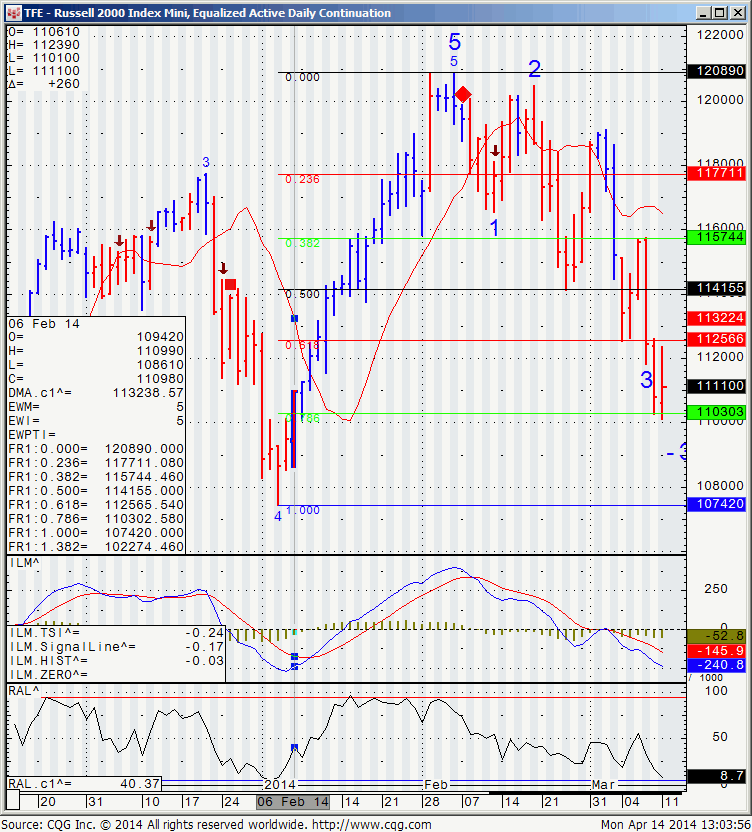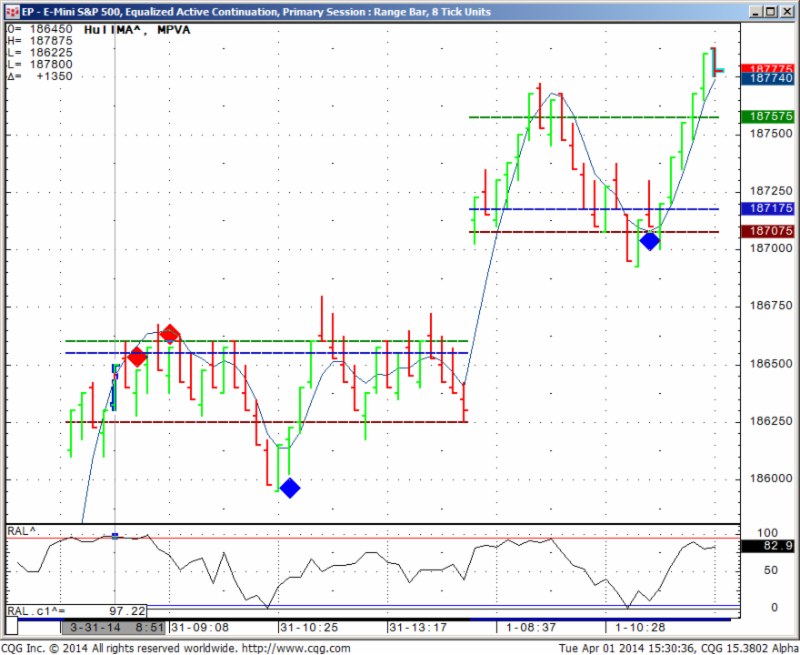Connect with Us! Use Our Futures Trading Levels and Economic Reports RSS Feed.






1. Market Commentary
2. Futures Support and Resistance Levels – S&P, Nasdaq, Dow Jones, Russell 2000, Dollar Index
3. Commodities Support and Resistance Levels – Gold, Euro, Crude Oil, T-Bonds
4. Commodities Support and Resistance Levels – Corn, Wheat, Beans, Silver
5. Futures Economic Reports for Tuesday April 8, 2014
Hello Traders,
For 2014 I would like to wish all of you discipline and patience in your trading!
TradeTheNews.com Weekly Market Update: Fed and ECB appear on course but markets left asking for directions
Fri, 04 Apr 2014 16:23 PM EST- Three great hopes helped put a bid under global equity markets in the first half of the week: hope for Chinese stimulus, ECB action and a monster US March jobs report. However in each case, disappointment was the main outcome. In China, the government unveiled a “targeted mini stimulus” with no price tag that rehashed investment priorities laid out by Beijing earlier this year. The ECB took no action at its monthly policy meeting on Thursday, and President Draghi repeated all of his familiar talking points. Draghi asserted that inflation would turn around of its own accord in coming months, although he did begin talking about the theoretical possibility of a quantitative easing program for the Eurozone if it can’t. In the US, the March jobs report was good but not great, with NFPs slightly higher but other weak job trends also still in place. The trade data was sluggish with lower overseas demand weighing on US exports; leading economists to downgrade their outlooks for Q1 growth. In Japan, the government officially raised the sales tax from 5% to 8%, while weak Tankan survey data suggested that Abenomics is facing headwinds. Government bond markets remained firm helped by a confluence lackluster economic data, the belief that key central banks will stay with accommodative policies longer and asset allocation flows away from high beta momentum stocks. The US 10-year yield ended up little changed on the week finishing back below 2.75%. For the week, the DJIA rose 0.6%, the S&P500 added 0.4% and the Nasdaq fell 0.7%.- Coming into the March jobs reports, there was a general feeling that the numbers would outperform expectations. This did not come to pass and both the +192K NFP and +192K private payrolls were a hair below expectations. However the February NFP was revised to +197K from +175K, putting the average monthly growth over the past three months at a healthy +178k. Many analysts were concerned about the flat hourly earnings component (they grew 0.4% in February) and the continuing weakness in underemployment. Both issues were cited by Yellen at her post-FOMC decision press conference as reasons for rates to remain low for an extended period.
– In the first half of the week, Brent crude fell to its lowest level since last November thanks to pressure from the prospect of Libyan oil returning to the market. Libya’s eastern oil ports were seized by rebel groups demanding more political rights and a cut of the nation’s oil revenue. Negotiations with the protesters have gone well and the two sides are close to reaching a deal which will reopen the oilfields and increase exports to 600K bpd from the current 150K bpd. Libya would still be operating below its 1.4 million bpd capacity, however the increase would have a significant impact on markets. Brent traded below $105 on Wednesday, with but climbed higher through week’s end on fears the deal might fall apart.
– There was some calming of geopolitical tensions early in the week on reports that Russia had withdrawn some of the military assets from its border with Ukraine. Russia President Putin told German Chancellor Merkel that he had ordered a partial withdrawal of Russian forces from the border area. This news was disputed by western military figures, including US Defense Sec Hagel and NATO Chief Rasmussen. On Friday there were reports that the Pentagon was looking at the possibility of sending two combat brigades to the Eastern European NATO allies, most likely Poland.
– The “momentum stocks” got hammered again, particularly late in the week. Declines in high-profile tech names, selected biotechs and frothy recent IPOs drove the Nasdaq down nearly 3% on Friday alone, undercutting overall risk appetite. Tesla and Facebook both lost 8% a piece on Thursday and Friday, Netflix dropped as much as 6% at its worst on the two days and Amazon lost as much as 5%. Smaller tech names had an even worse time: recent IPO FireEye sank as much as 20% in the Wednesday-to-Friday period, while Splunk and Palo Alto Networks dropped 14% a piece over the same period.
– Auto sales in January and February were sluggish and the major manufacturers claimed that intense winter weather had kept traffic away from dealerships. The March data out this week seems to confirm the industry’s excuses, as industry SAAR surged to 16.4M units, beating last year’s 15.3 million mark. Analysts highlight that the industry increased incentives to lure more traffic. Fiat’s Chrysler posted the largest sales increase, +13% y/y, the firm’s best March since 2007. Jeep and Ram truck brands saw sales increases of 47% and 26%, respectively, making for Jeep’s best sales month of all time. GM’s sales were up 4%, although bad press from CEO Mary Barra’s hammering on Capitol Hill over the ignition parts scandal obscured the firm’s results. Ford sales were up 3%. Toyota March sales grew 4.9%, while Nissan sales grew 8.3%.
Continue reading “Futures Market Direction 4.08.2014”
![]()
![]()
![]()
![]()
![]()
![]()

